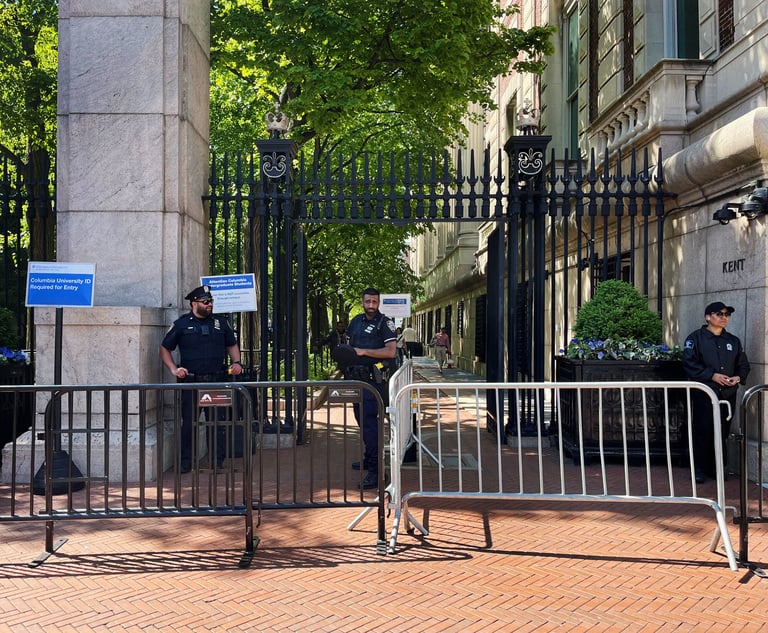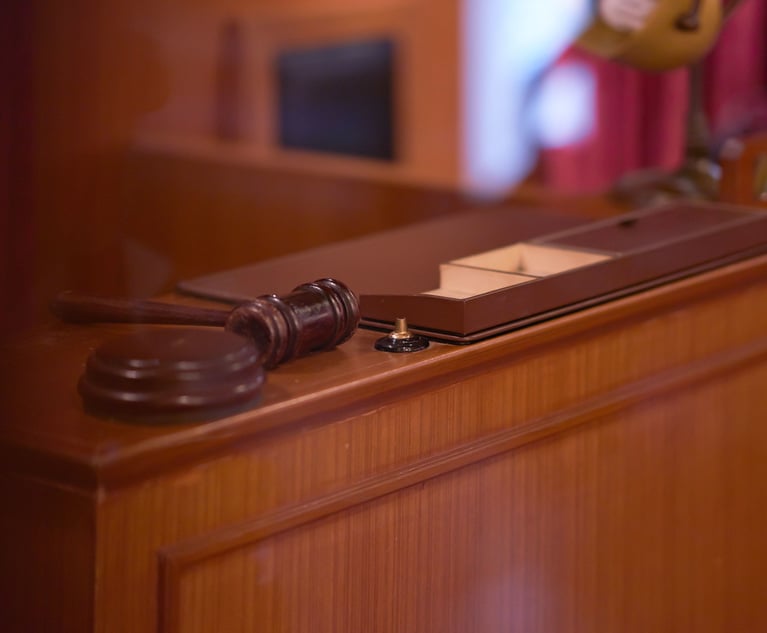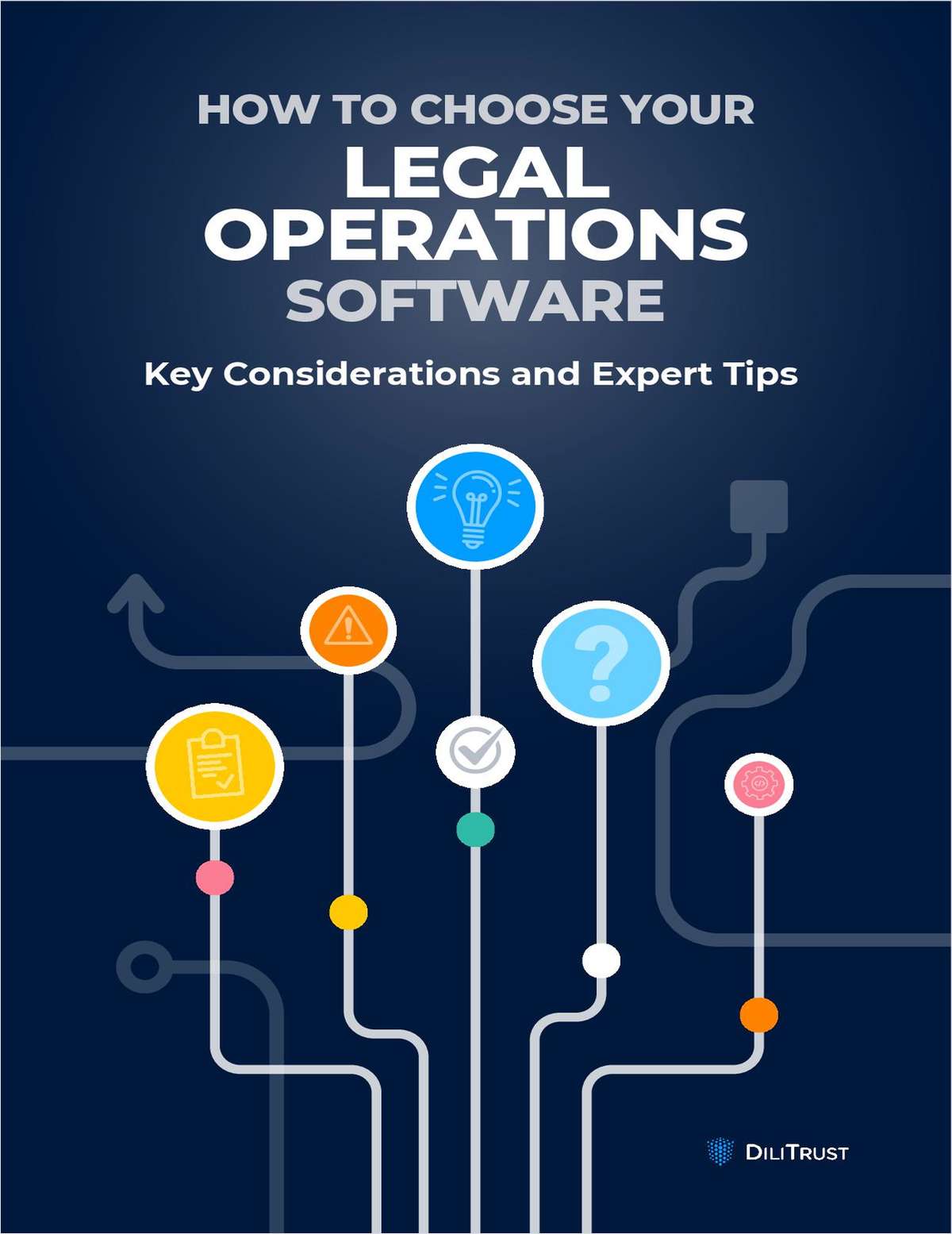Ahead of the Curve: Originalism Gets an App
BYU Law Dean Gordon Smith talks about his school's new legal corpus linguistics database. Plus, the University of Alabama School of Law's new name.
September 25, 2018 at 08:02 PM
10 minute read
Welcome back to Ahead of the Curve. I'm Karen Sloan, legal education editor at Law.com, and I'll be your host for this weekly look at innovation and notable developments in legal education.
This week I'm chatting with BYU Law Dean Gordon Smith about his school's newlegal corpus linguistics database, which brings a tech spin to legal originalism. Next up is a look at the University of Alabama School of Law's new name and my two cents on the best way to rename after a big donation. Finally, I've got a fun read on the reunification of two stone gargoyles that once graced the roof of the University of Wisconsin Law School.
Not signed up yet to get Ahead of the Curve sent to your inbox each week? Go here.
|
Originalism? There's An App for That
Originalism is a popular legal philosophy, but how should judges, legal scholars and lawyers go about determining the original meaning of founding-era words and texts?
Turns out there's an app for that. Brigham Young University J. Rueben Clark Law School has unveiled the first-ever legal-focused corpus linguistics database, a free online resource available to the public. Is the phrase “corpus linguistics database” meaningless to you? Well, you and me both. I saw the press release the school put out last week about the project and thought, “Huh?”
Intrepid reporter that I am, I decided to get to the bottom of it and hopped on the phone with BYU Law Dean Gordon Smith and corpus linguistics research fellow James Heilpern to learn more.
Here's the gist: A “corpus” is a database of text that linguists use to analyze the meaning of words with an eye to how they are used in the natural context. (Corpora is the plural of corpus) So what BYU has done is create the first legal-themed corpus, the purpose of which is to help judges and lawyers figure out the original meaning of word at the time of their use, since meanings can shift over time and dictionary definitions don't necessarily capture how particular word were used at any given period.
To get more technical, BYU has created three separate corpora: The Corpus of Founding-Era American English, or COFEA (this is the one that's useful for getting into the minds of the framers of the constitution); the Corpus of Early Modern English, or COMEA; and the Corpus of the Supreme Court of the United States, or COSCOTUS.
Gordon and Heilpern walked me through how it works. Users go into the database and enter the word or phrase they are researching, and the database spits back all the instances in which that word or phrase appears in the collected texts. Users can then easily see the context of how those words or phrases were used, what words most commonly show up around them, etc. From there, users can make an informed determination about the meaning of that work or phrase at the time it was written. Easy peasy. Here's Heilpern on why this is important:
“Up until now, there really hasn't been a good methodology for getting at what that original meaning was. Our development of COFEA and some of the pother corpora is really an effort to provide justices with the sort of evidence they claim they want. We didn't development the methodology of originalism, for example. We just created a tool to devise really good, empirical, statistical evidence for judges to help know, in general, this is what this particular word means. Corpus linguistics kind of forces the judge to back up their conclusions, and that makes legal analysis less opaque and more transparent.”
To be sure, the use of corpus linguistics in the legal context is in its infancy, in part because no one had created corpora of legal-focused texts. And judges also need to buy in. A pair of decisions from the Utah Supreme Court have cited corpus linguistics, generating some interest within the legal community.
BYU faces challenges in launching the project, particularly with the founding-era database. (The University of Pennsylvania had pursued a similar project but abandoned it, according to the Smith.) It's difficult to find clean, digital versions of these more than 200-year-old documents. Moreover, word spellings weren't standardized until the early 1800s. Hence, the BYU databases have the ability to search multiple spellings in order to be as complete as possible.
My thoughts: It was neat to see the program in action. Smith demonstrated the technology by searching the phrase “bear arms” which obviously centers on Second Amendment. Almost instantly the program returned 280 examples of that phrase appearing in founding-era texts. (Most had to do with military and militia actions.) So it's easy to see how it would be useful, or at least interesting, for lawyers and judges to play around with it. But I asked Smith why his law school pursued the project, which he said came with “substantial costs” shared by the school, grants, and donors. It's not as though corpus linguistics will goose the school's U.S. News ranking or bolster bar passage rates. “We decided to make that investment because we think it's important to expand the frontiers of knowledge.”
|
'Bama Law Gets a New Name
Congratulations to the University of Alabama School of Law, er, the Hugh F. Culverhouse Jr. School of Law at the University of Alabama. The latter is the Tuscaloosa law school's new official name after business executive and real estate developer Hugh Culverhouse committed $26.5 million—the largest donation in the university's history. There's a bit of a twist with this one, though. Culverhouse didn't actually go to Alabama Law. He graduated from the University of Florida Levin College of Law in 1974. (No word on how Florida Law feels about Culverhouse's generosity toward Alabama, but he has also spread some largesse to his alma mater. He gave $1.5 million to Florida last year for student scholarships.)
Nevertheless, Culverhouse has Alabama ties. The university's business school is named for this father, and Culverhouse and his wife, Eliza have given almost $40 million to the University of Alabama over the past decade. Apparently Culverhouse and Alabama Law Dean Mark Brandon struck up a friendship in the lead up to the renaming, as they discussed the Constitution.
So who is Culverhouse? He owns Palmer Ranch Holdings, a master planned community in Sarasota, Florida, among other ventures. His donation will establish an endowment to pursue innovations including a modernized library, student scholarships, an expanded physical presence and more career opportunities, according to the school.
The Takeaway: Good on Alabama for securing a hefty gift. But I have to be honest on this, I'm not a fan of sticking a donor on the front end of an official school name. I don't begrudge law schools for donor renamings. I understand that's what they often have to do get the big check.
But there's a more elegant way to do it. Here are my gripes: First, it's just cumbersome to look at, say, and type. But more importantly, it pushes the core function of the program i.e. “law school” to the very back of a long name. In journalism, we call that “burying the lede.” Alabama isn't the only one to go this route, although it may be the worst offender for making “law school” the very last part of the name. Think, the Antonin Scalia Law School at George Mason University, the William S. Boyd School of Law at the University of Nevada, Las Vegas; or the Alexander Blewett III School of Law at the University of Montana. I also prefer renamings that include just a last name rather than a first, last, and even middle initial, which feels excessive. But hey, I'm not in the development office. So there you have it.
|
The Monster at the Law School
I love this story that the University of Wisconsin—Madison published last week about the reunification of two matching gargoyles that once stood atop its law school, 70 years after being separated. I urge anyone who needs a mental break from the Kavanaugh confirmation drama to take a few minutes and read it.
The very short version is that the school's original building, constructed in 1893, had two sandstone gargoyles on it. The official version is that only one of the gargoyles survived the demolition of that old building in 1963, when a new facility was built. But the Been family of Wisconsin has another version, which is that their father, Paul Been, and some law school friends found the “right gargoyle” on the ground after it fell off its perch during a storm in 1951 or 1952 and spirited it away in a wheelbarrow. The gargoyle has been in the family's care for decades, but they decided to return it to the school after the recent death of their mother, Anita Been.
The law school hasn't decided exactly what to do with the reunited pair yet, but I like law dean Margaret Raymond's take:
“The story here has always been that the gargoyle that has graced our building here for decades was the only one saved from destruction. But I guess it's no surprise that someone coming out of the UW Law School is resilient, adventurous and adaptable (if a bit hard-headed). Our graduates have been that way for 150 years.”
|
Extra Credit Reading
Yale Law School is knee-deep in the Kavanaugh confirmation debate. Nearly 50 Yale Law professors sent a letter to the Senate Judiciary Committee last week, urging it to hit pause and fully investigate sexual misconduct allegations. On Monday, more than 100 students descended on U.S. Senate offices, raising their own concerns about Kavanaugh. And legal academics weighed in on allegations that prominent Yale Law Professor Amy Chua counseled female students to look conventionally attractive during clerkship interviews with Kavanaugh.
Want more Kavanaugh law school news? Four Harvard law students wrote an op-ed in the law school newspaper asking what the school knew about the judge and whether he'll still, be teaching a winter course on the modern Supreme Court.
The Association of American Law Schools last week released its long awaited Before the JD study, which found most undergraduates interested in law school are motivated by a desire to serve the public rather than by money.
A longtime professor at Indiana University Maurer School of Law—Bloomingtonplans to file a civil rights lawsuit against an Indianapolis police officer who last fall pulled him over at gunpoint for allegedly speeding. Kevin Brown, who is African American, was arrested though charges against him were dismissed.
I'll be back next week with more news and updates on the future of legal education. Until then, keep in touch at [email protected]
This content has been archived. It is available through our partners, LexisNexis® and Bloomberg Law.
To view this content, please continue to their sites.
Not a Lexis Subscriber?
Subscribe Now
Not a Bloomberg Law Subscriber?
Subscribe Now
NOT FOR REPRINT
© 2024 ALM Global, LLC, All Rights Reserved. Request academic re-use from www.copyright.com. All other uses, submit a request to [email protected]. For more information visit Asset & Logo Licensing.
You Might Like
View All



Trending Stories
- 1Friday Newspaper
- 2Judge Denies Sean Combs Third Bail Bid, Citing Community Safety
- 3Republican FTC Commissioner: 'The Time for Rulemaking by the Biden-Harris FTC Is Over'
- 4NY Appellate Panel Cites Student's Disciplinary History While Sending Negligence Claim Against School District to Trial
- 5A Meta DIG and Its Nvidia Implications
Who Got The Work
Michael G. Bongiorno, Andrew Scott Dulberg and Elizabeth E. Driscoll from Wilmer Cutler Pickering Hale and Dorr have stepped in to represent Symbotic Inc., an A.I.-enabled technology platform that focuses on increasing supply chain efficiency, and other defendants in a pending shareholder derivative lawsuit. The case, filed Oct. 2 in Massachusetts District Court by the Brown Law Firm on behalf of Stephen Austen, accuses certain officers and directors of misleading investors in regard to Symbotic's potential for margin growth by failing to disclose that the company was not equipped to timely deploy its systems or manage expenses through project delays. The case, assigned to U.S. District Judge Nathaniel M. Gorton, is 1:24-cv-12522, Austen v. Cohen et al.
Who Got The Work
Edmund Polubinski and Marie Killmond of Davis Polk & Wardwell have entered appearances for data platform software development company MongoDB and other defendants in a pending shareholder derivative lawsuit. The action, filed Oct. 7 in New York Southern District Court by the Brown Law Firm, accuses the company's directors and/or officers of falsely expressing confidence in the company’s restructuring of its sales incentive plan and downplaying the severity of decreases in its upfront commitments. The case is 1:24-cv-07594, Roy v. Ittycheria et al.
Who Got The Work
Amy O. Bruchs and Kurt F. Ellison of Michael Best & Friedrich have entered appearances for Epic Systems Corp. in a pending employment discrimination lawsuit. The suit was filed Sept. 7 in Wisconsin Western District Court by Levine Eisberner LLC and Siri & Glimstad on behalf of a project manager who claims that he was wrongfully terminated after applying for a religious exemption to the defendant's COVID-19 vaccine mandate. The case, assigned to U.S. Magistrate Judge Anita Marie Boor, is 3:24-cv-00630, Secker, Nathan v. Epic Systems Corporation.
Who Got The Work
David X. Sullivan, Thomas J. Finn and Gregory A. Hall from McCarter & English have entered appearances for Sunrun Installation Services in a pending civil rights lawsuit. The complaint was filed Sept. 4 in Connecticut District Court by attorney Robert M. Berke on behalf of former employee George Edward Steins, who was arrested and charged with employing an unregistered home improvement salesperson. The complaint alleges that had Sunrun informed the Connecticut Department of Consumer Protection that the plaintiff's employment had ended in 2017 and that he no longer held Sunrun's home improvement contractor license, he would not have been hit with charges, which were dismissed in May 2024. The case, assigned to U.S. District Judge Jeffrey A. Meyer, is 3:24-cv-01423, Steins v. Sunrun, Inc. et al.
Who Got The Work
Greenberg Traurig shareholder Joshua L. Raskin has entered an appearance for boohoo.com UK Ltd. in a pending patent infringement lawsuit. The suit, filed Sept. 3 in Texas Eastern District Court by Rozier Hardt McDonough on behalf of Alto Dynamics, asserts five patents related to an online shopping platform. The case, assigned to U.S. District Judge Rodney Gilstrap, is 2:24-cv-00719, Alto Dynamics, LLC v. boohoo.com UK Limited.
Featured Firms
Law Offices of Gary Martin Hays & Associates, P.C.
(470) 294-1674
Law Offices of Mark E. Salomone
(857) 444-6468
Smith & Hassler
(713) 739-1250










